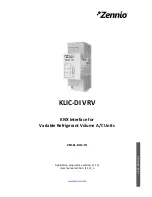
LTC3810-5
20
38105fd
than other types. Tantalum capacitors have the highest
capacitance density but it is important to only use types
that have been surge tested for use in switching power
supplies. Several excellent surge-tested choices are the
AVX, TPS and TPSV or the KEMET T510 series. Aluminum
electrolytic capacitors have significantly higher ESR, but
can be used in cost-driven applications providing that
consideration is given to ripple current ratings and long
term reliability. Other capacitor types include Panasonic
SP and Sanyo POSCAPs.
Output Voltage
The LTC3810-5 output voltage is set by a resistor divider
according to the following formula:
V
OUT
=
0.8V 1
+
R
FB1
R
FB2
⎛
⎝⎜
⎞
⎠⎟
The external resistor divider is connected to the output as
shown in the Functional Diagram, allowing remote voltage
sensing. The resultant feedback signal is compared with
the internal precision 800mV voltage reference by the
error amplifier. The internal reference has a guaranteed
tolerance of less than ±1%. Tolerance of the feedback
resistors will add additional error to the output voltage.
0.1% to 1% resistors are recommended.
Input Voltage Undervoltage Lockout
A resistor divider connected from the input supply to the
UVIN pin (see Functional Diagram) is used to program the
input supply undervoltage lockout thresholds. When the
rising voltage at UVIN reaches 0.88V the LTC3810 turns
on, and when the falling voltage at UVIN drops below 0.8V,
the LTC3810 is shut down—providing 10% hysterisis.
The input voltage UVLO thresholds are set by the resistor
divider according to the following formulas:
V
IN,FALLING
= 0.8V (1 + R
UV1
/R
UV2
)
and
V
IN,RISING
= 0.88V (1 + R
UV1
/R
UV2
)
If input supply undervoltage lockout is not needed, it can
be disabled by connecting UVIN to INTV
CC
.
Top MOSFET Driver Supply (C
B
, D
B
)
An external bootstrap capacitor, C
B
, connected to the
BOOST pin supplies the gate drive voltage for the topside
MOSFET. This capacitor is charged through diode D
B
from
DRV
CC
when the switch node is low. When the top MOSFET
turns on, the switch node rises to V
IN
and the BOOST pin
rises to approximately V
IN
+ INTV
CC
. The boost capacitor
needs to store about 100 times the gate charge required
by the top MOSFET. In most applications 0.1µF to 0.47µF ,
X5R or X7R dielectric capacitor is adequate.
The reverse breakdown of the external diode, D
B
, must be
greater than V
IN(MAX)
. Another important consideration for
the external diode is the reverse recovery and reverse leak-
age, either of which may cause excessive reverse current
to flow at full reverse voltage. If the reverse current times
reverse voltage exceeds the maximum allowable power
dissipation, the diode may be damaged. For best results,
use an ultrafast recovery diode such as the MMDL770T1.
Bottom MOSFET Driver Return Supply (BGRTN)
The bottom gate driver, BG, switches from DRV
CC
to
BGRTN where BGRTN can be a voltage between ground
and –5V. Why not just keep it simple and always connect
BGRTN to ground? In high voltage switching converters,
the switch node dV/dt can be many volts/ns, which will
pull up on the gate of the bottom MOSFET through its
Miller capacitance. If this Miller current, times the internal
gate resistance of the MOSFET plus the driver resistance,
exceeds the threshold of the FET, shoot-through will oc-
cur. By using a negative supply on BGRTN, the BG can be
pulled below ground when turning the bottom MOSFET off.
This provides a few extra volts of margin before the gate
reaches the turn-on threshold of the MOSFET. Be aware
that the maximum voltage difference between DRV
CC
and
BGRTN is 14V. If, for example, V
BGRTN
= –2V, the maximum
voltage on DRV
CC
pin is now 12V instead of 14V.
IC/MOSFET Driver Supplies (INTV
CC
and DRV
CC
)
The LTC3810-5 drivers are supplied from the DRV
CC
and BOOST pins (see Figure 2), which have an absolute
maximum voltage of 14V. Since the main supply voltage,
applicaTions inForMaTion
















































